Difference between revisions of "Brain tanning"
| Line 179: | Line 179: | ||
! bgcolor=#eeeeee | Process steps in the [[leather production]] | ! bgcolor=#eeeeee | Process steps in the [[leather production]] | ||
|- | |- | ||
| − | | bgcolor=#ffffff align=center | [[storage of leather|storage]] - [[soaking]] - [[Liming - Leather Tanning|liming]] - [[Fleshing - Making of leather|fleshing]] - [[Split leather|splitting]] - [[pickling]] - [[Tanning leather|tanning]] - [[neutralising]] - [[Drying leather|withering]] - [[Leather production#Sorting|sorting]] - [[shaving]] - [[Leather production#Dyeing (through colouring) and fatliquoring| | + | | bgcolor=#ffffff align=center | [[storage of leather|storage]] - [[soaking]] - [[Liming - Leather Tanning|liming]] - [[Fleshing - Making of leather|fleshing]] - [[Split leather|splitting]] - [[pickling]] - [[Tanning leather|tanning]] - [[neutralising]] - [[Drying leather|withering]] - [[Leather production#Sorting|sorting]] - [[shaving]] - [[Leather production#Dyeing (through colouring) and fatliquoring|dyeing (through colouring) and fatliquoring]] - [[Drying leather|drying]] - [[finish]] - [[softening]] - [[Leather quality|final check]] |
|} | |} | ||
</center> | </center> | ||
Revision as of 13:09, 5 February 2017
The tanning of animal skins with the animal brain mass is an almost forgotten method of tanning, which in practice is hardly applicable today. Historically, it was mainly used by North American Indians who also used to use smoke as a way of preserving the skins in addition to brain tanning. This leather was also called "Indian leather".
Also, the Zulu in Africa, the Sami in Scandinavia and the different groups of people from Asia knew this tanning process. The hides of all mammals can be used for brain tanning. The larger the skin, the harder the work.
Advantages of brain tanning: The brain was always readily available after the animals were killed and the tanning with brain is a very fast process. Brain tanning takes only a few days. Also, the technical effort is low, and it is easy to make the leather soft. The production takes place 100% from natural products and you do not need any further "chemistry".
Disadvantages of brain tanning is the high manual workload, and the tanning process is not as easy when compared to alternative tanning methods. The skin layer of the hair side as well as the fat and flesh remnants of the back must be carefully and thoroughly removed so that the brain can penetrate the fibres well. This is the only way to ensure the leather gets beautifully soft. The brain mass must be pressed into the fibre with considerable effort.
To ensure a long-lasting softness of the leather, it was traditionally stored in a special tent over wood smoke, which gave the skin a dark brown tone and also made it waterproof thus protecting it better. Without this process, the leather turns out to be whitish and water-sensitive.
Video about brain tanning
Visiting a tanning course with brain tanning.
The fat and meat remnants must be removed. There is a clear separation between fat and meat remnants and the end product
It is not surprising to find insects stuck in the animal skin when the hair is scraped off.
Stretching the skin in the Stretcher and drying frame.
Dry-scraping must be done carefully from left to right and from top to bottom. The skin can be damaged if not done with care.
Any holes that exist in the leather need to be sewed up.
Brain tanning: Basically, the brain can be used for all animals. Usually, the brain mass of an animal is enough to make leather from its skin. It is available at the slaughterhouse or butcher, if one does not have the head of the animal. Brain is quickly perishable. Therefore, needs to be used immediately or must be frozen. Approximately 300 grams of brain mass is needed for a deer skin
Variations of these methods are still used by do-it-yourself outdoorsmen to tan hides. The use of brains and the idea that each animal (except buffalo) has just enough brains for the tanning process have led to the saying "Every animal has just enough brain to preserve its own hide, dead or alive." Another saying: "Every animal has enough brain to preserve its own hide, except giraffe and teenager....".
Fresh brain when rubbing into a skin or in the Stretcher and drying frame.
Push in and squeeze it out again and repeat it all the time.
Softening: The leather has to be slightly moist for softening. Otherwise moisten the leather slightly with water. Thinner areas dry faster, so be careful not to dry out. To loosen the fibre, hold the leather with both hands and pull over a rounded and blunt edge. Alternatively, the leather can only be kneaded and stretched with hands. It is easier if several people help themselves and pull the leather together to stretch it. You can pull the leather by rope loops or over lines and pull in opposite directions at both ends. This is hard work and needs experience.
In the beginning still funny, but to the end hard work. The skin is scraped with a wood, pulled by a rope or a sharp wooden edge.
Smoking: By smoking, the Indians of North America prevented the leather from becoming hard by wetness. Smoking waterproofs the surface. Due to the darker colour of the smoke, the leather does not look so dirty. This treatment allows the leather to be washed if needed.
Smoking the skins helps a lot.
Additional information
- Tanning leather
- Tannins
- Chrome tanning
- Vegetable tanning
- Synthetic tanning
- Tanning with fats and oils
- Chamois leather
- Tawing with alum
- How to tan leather yourself?
Videos about the leather production
The leather production in a modern tannery.
The brain tanning process.
The leather production with tannins of the oak.
Chamois leather production in Germany.
The production of beaver skins.
| Process steps in the leather production |
|---|
| storage - soaking - liming - fleshing - splitting - pickling - tanning - neutralising - withering - sorting - shaving - dyeing (through colouring) and fatliquoring - drying - finish - softening - final check |
| Tanning methods |
|---|
| Chrome tanning - Vegetable-tanned leather - Synthetic tanning - Tanning with fats and oils |







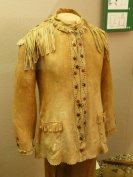
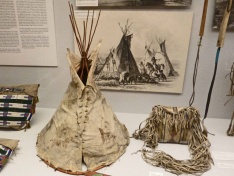
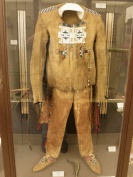
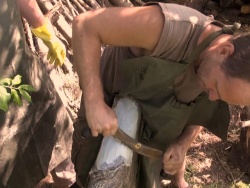
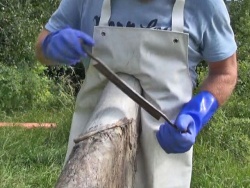
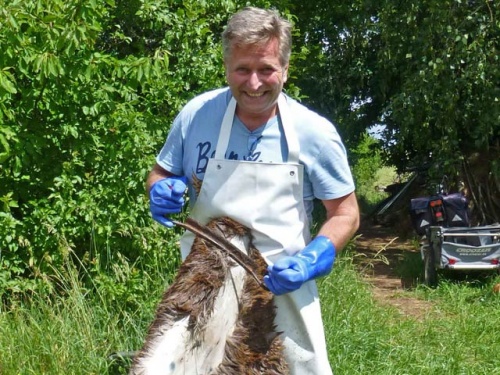
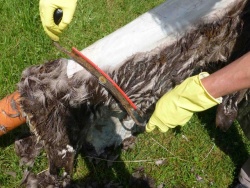
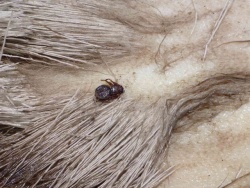
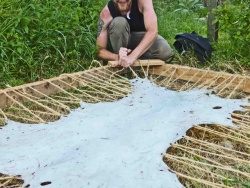
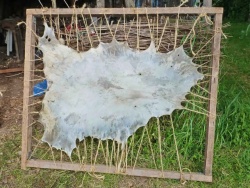
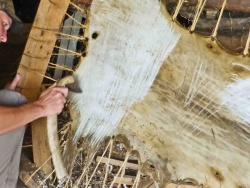
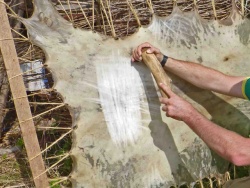
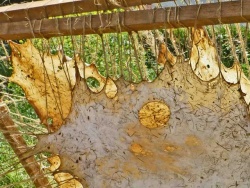
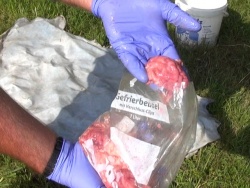
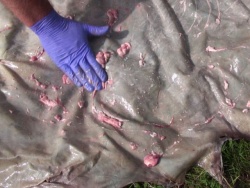
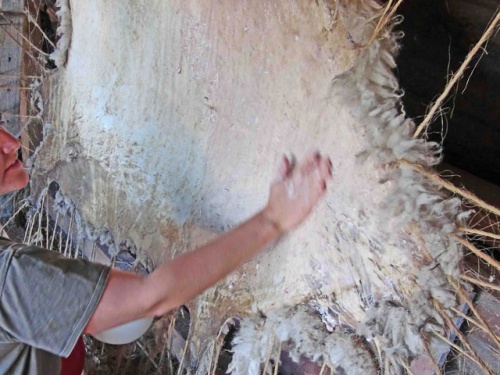
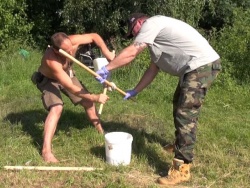
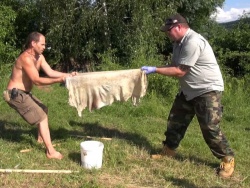
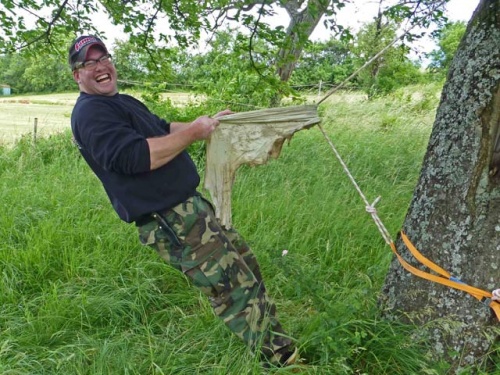
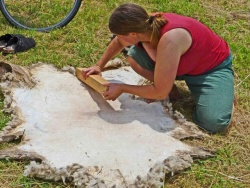
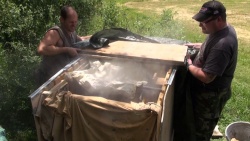
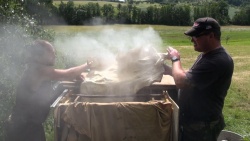

 a kotori web solution
a kotori web solution